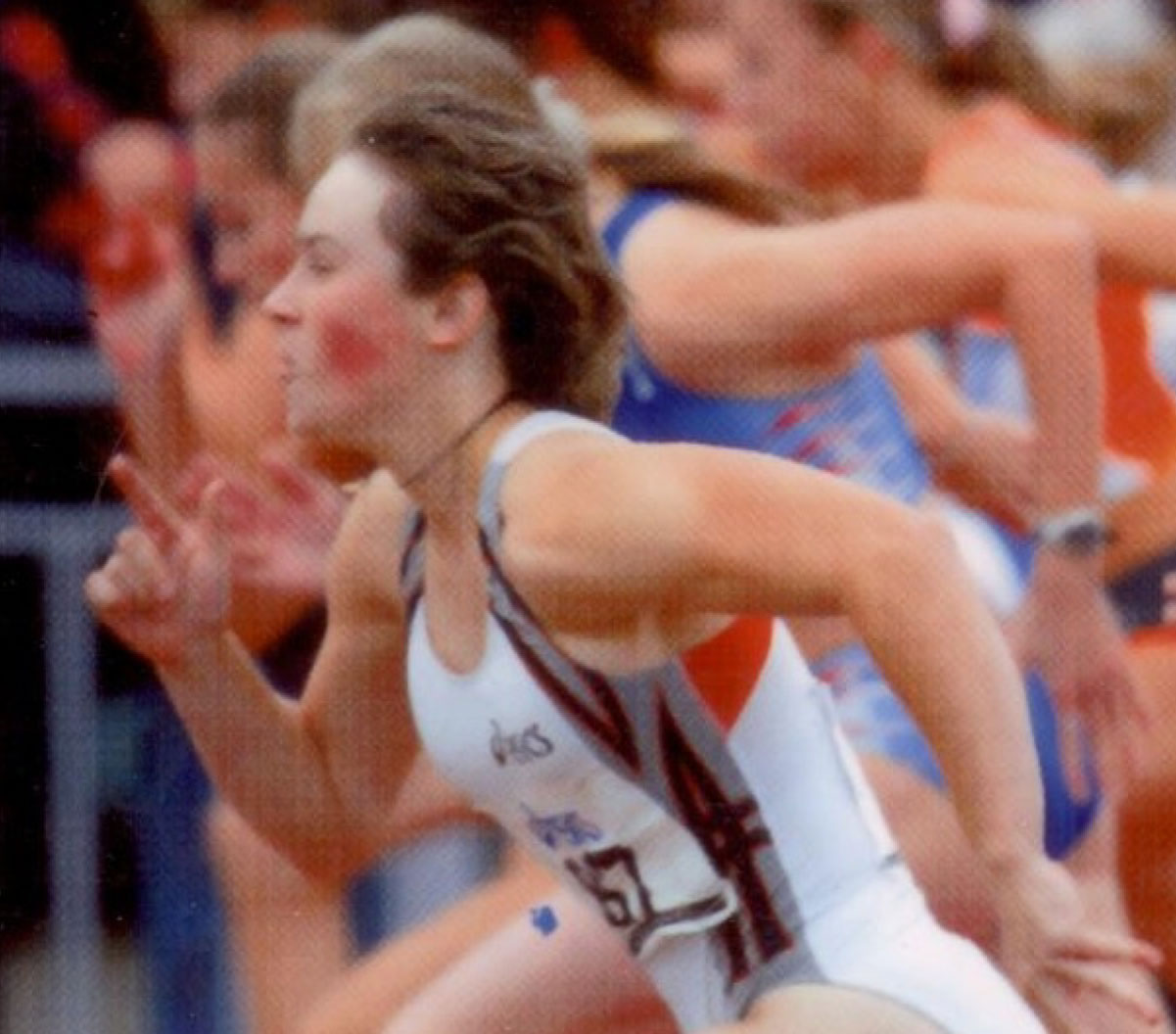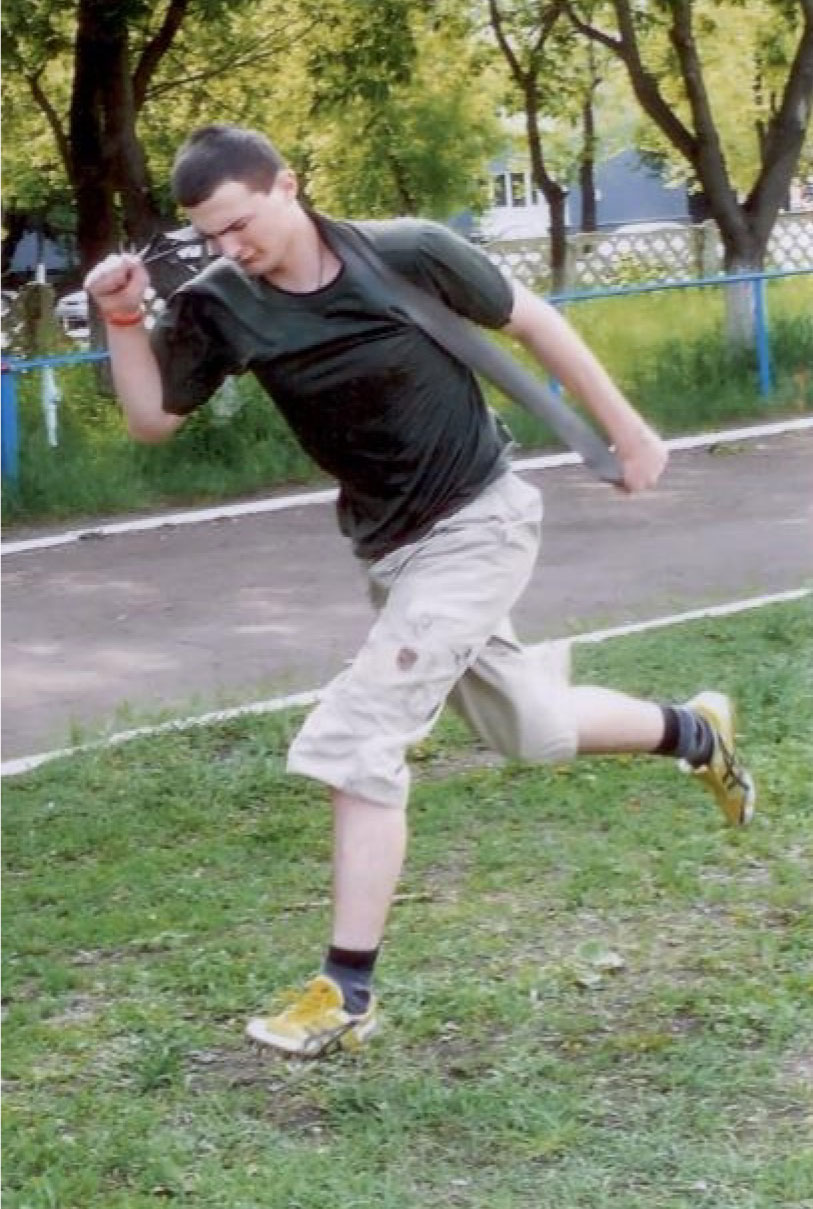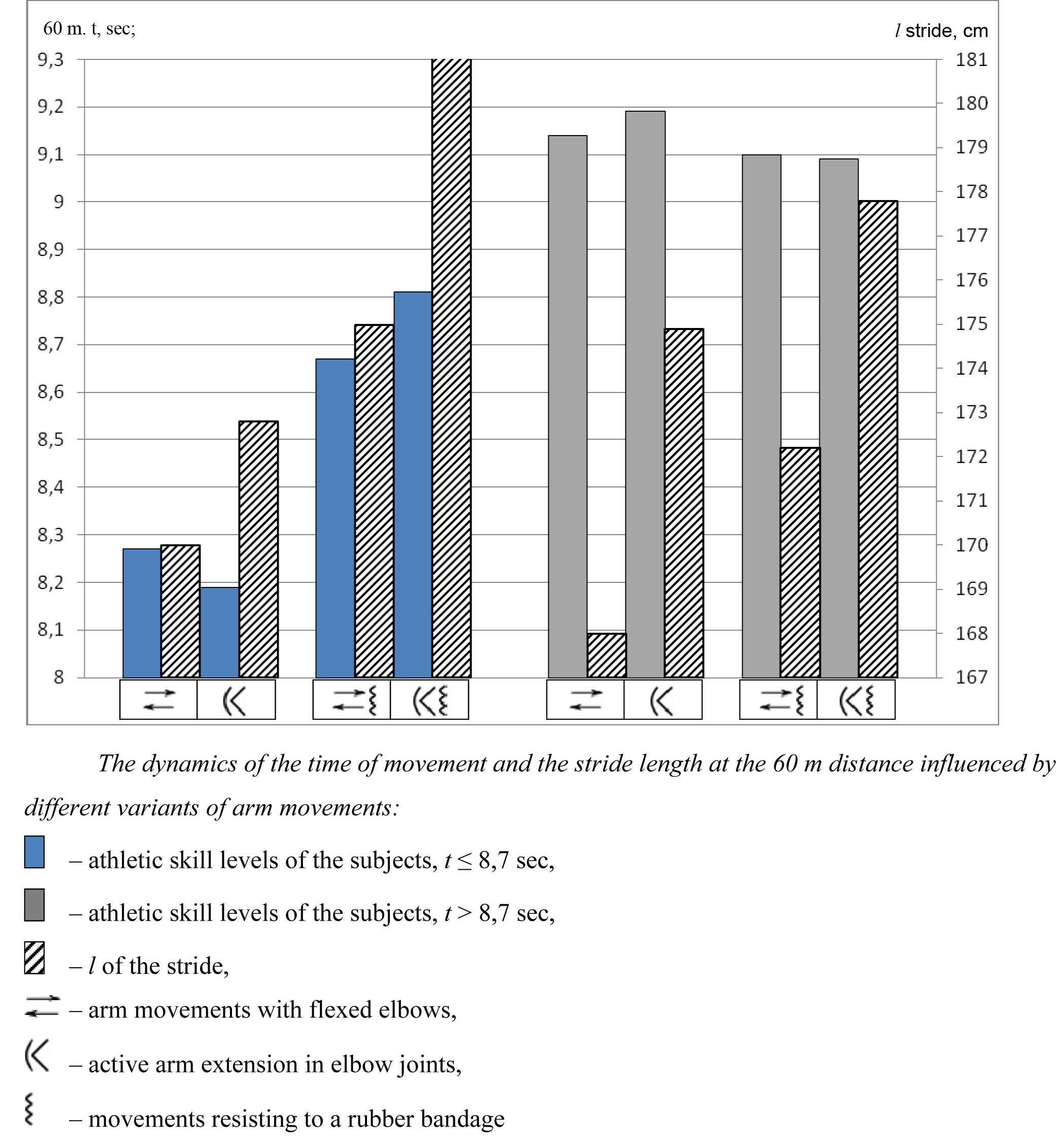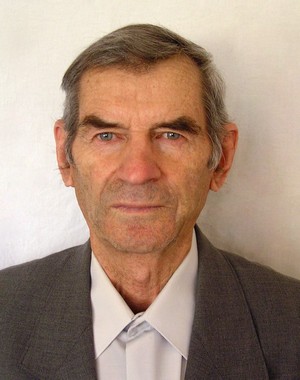Variability and Interrelation of Arm Moves with Progressive Run Length and Travel Speed in Sprint
Фотографии:
ˑ:
A.N. Begletsov, associate professor, Ph.D.
Russian Association of medical and educational institutions "Biorenaissance", Magnitogorsk
Key words: stride length, speed of movement, congenital motor reflex, extensors in upper and lower limbs.
Introduction. When walking or running, arm movements are usually considered in terms of maintaining balance. A.B. Maysky [6] in his study of the interrelation of legs, trunk and arms in sprint concludes that arm movements are of consecutive manner, as a result of rotating the upper torso around the longitudinal axis.
Proceeding from the descriptions in the sports methodological literature, the peculiarities of arm movements in the running stride can be reduced mainly to amplitude differences, depending on the distance run. In sprint, i.e. at high speed, arms move with a wide-amplitude and some extension in the elbow. In long-distance running the amplitude of arm movements greatly reduces and there is a tendency to preserve the amplitude of flexion in elbow joints.
But in several cases (Fig. 1), different amplitude of arm extension in the elbow joints can be observed in those running for the same distance intervals.
In light of this, the question is, whether the work of runner’s arms is limited to just maintaining balance or there are some other unrevealed functions of this work.
V.M. Smirnov and V.I. Dubrovsky note that in cyclic motions the physiological basis is performed by the rhythmic motor chain reflex which is of an unconditional reflex origin and is maintained automatically. There is noted the commonality of all phases of movement in one cycle. And the main variables in these movements are power and duration of work performed, determined by the cycles frequency, amplitude and power of movements [8, p. 529].
Upper and lower limbs are close in respect to anatomical organization. They are inherently interrelated with a single locomotor act both in phylogenesis and ontogenesis. Hence, we assume that the unconditional origin of movements in cyclic exercises can be seen in arms and legs working together.
Thus, assuming that arms' motor work in running is poorly studied, we decided to make a research in this interesting area.
Materials and methods. 38 students engaged in weightlifting on the basis of the sports-oriented curriculum with three classes in two weeks were involved in the study, which included three experimental sessions to complete the specific objectives of the study:
- Preliminary control measurement of the initial result - time (t) of running a 60 m distance in the way usual to students. Running was performed from standing start. Time was registered in centiseconds using a manual chronometer. In order to prevent the motor response of the subjects to the starter's signal the stopwatch was triggered by the first movement of the runners. The attempt to discover the initial, usual movements of subjects’ arms in order to further analyze the results of the study proved to be unrealistic due to the high variability and uncertainty of these movements.
-
Running on instructions. Two runs were performed. In the first run the task was: when moving forward and back to maintain the angle of flexion in elbow joints, to perform movements with the elbows –
 . The second run was performed with arms actively extended in the elbow joints
. The second run was performed with arms actively extended in the elbow joints  .
.
Before the run instructions were given regarding arm movements - with explanation, showing and testing in the warm-up acceleration. There were no instructions about leg movements and stride length. The time of running the distance was registered and the stride length was measured from the start up to the finish. Athletes run on a ground track in running shoes with spikes. The stride length measurement was made with a regular ruler measuring footprints left from the shoes' spikes. -
Running on the instructions of the second session, but resisting to a rubber bandage
 .
.
It was assumed that a rubber bandage – over the neck and shoulder joints will increase the specialized physical load on arm muscles (Fig. 2). And given the unconditioned reflex bonds in cyclic movements (see above), without special instructions you can expect an automatic increase in the activity of the corresponding groups of leg muscles. We believed, the increase in the activity of leg muscles would, first of all, affect the strength (length) of the running stride.
Results and discussion. The results of the study were assessed using the mathematical method of variance analysis.
Due to big differences in the running skills of the subjects (t from 7,72 to 9,57 sec), registered during the control measurements at the first session, the group was divided into two qualification subgroups. The first subgroup was made of students, who had run the 60 m distance in the initial test for t ≤ 7,8 sec, and the second subgroup - those who had run it for t > 7,8 sec.

Fig. 1. Different angles of arm extension in the elbow joints

Fig. 2. Run extending arms in the elbow joints resisting to a rubber bandage
Fig. 3 shows the dynamics of the stride length and the time of running the 60 m distance under the influence of the arms work programmed in the study. The figure was made according to the factors and gradations of the dispersion complex.
The effect of hand movements and skills of the subjects on the time of running the distance was 60,6%, р <0,01. The impact on the stride length – 11,7 %, р < 0,05.
In all tested variants of the arms work the stride within the same mental sets (tasks) was always longer when the arms were extended more actively in the elbow joints, compared with the work with flexed elbows. An especially significant increase in the stride length was observed when using this task and the rubber bandage together (Fig. 2). Individually, in some cases, considering such psychophysical exposure, sometimes the stride length increased by another 20 cm, after its first increase in the run with flexed elbows.
It is known that the sprint speed is correlated with the stride length. Beginners tend to have a shorter stride compared with elite runners. Therefore, the main goal of trainers is to increase the movement speed with longer stride.
In our studies, the running speed did not increase unambiguously with the increase in the stride length. But the tendency to the appearance of such a motor response in the subjects, within certain limits of the stride length, can be seen in our study materials.

Fig. 3. The dynamics of the time of movement and the stride length at the 60 m distance influenced by different variants of arm movements:
– athletic skill levels of the subjects, t ≤ 8,7 sec,
– athletic skill levels of the subjects, t > 8,7 sec,
– l of the stride,
– arm movements with flexed elbows,
– active arm extension in elbow joints,
– movements resisting to a rubber bandage
Thus, in the first subgroup, when performing the task of running with flexed elbows without resisting to the bandage some decrease in the time of running the distance was noted compared to the initial level tx = 8,38 sec to 8,28 with the stride length of 170,1 cm. The further increase in the stride length up to 172,6 cm due to the arms extended in the elbows contributed to reduction of the time of running the distance down to 8,19 sec. But the subsequent increase in the stride length with the help of the arms load was accompanied by decrease of the running time (Fig. 3, on the left, , lstride = 175,5 cm, t = 8,68 sec and , lstride = 181,2 cm, t = 8,82 sec).
In the second subgroup, unlike the first one, on the contrary, the best time comparing to the initial one — tx = 9,12 sec and the maximum stride length was observed when running the distance and combining the tasks with arms resisting to the bandage (Fig. 3, on the right,, lstride = 177,8 cm, t = 9,08 sec)
In the same task, but without resisting to the bandage, the stride length increased from 168,2 cm to 174,7 cm, accompanied with an increase in the time of running the distance compared with the initial one (tx = 9,12, 9,14 and 9,18 sec)
We believe that students of the first subgroup had a better sense of analytical skills compared with the second one. And so they were able to realize their motor potential without resorting to the arm load, which was unavailable for students of the second subgroup. And it is likely that the students of the second subgroup, in contrast to the first one, proved to have very low general and special physical potentials, which could be immediately implemented in motor skills in their new form.
According to the additional analysis of the running speed under the influence of all the study options, compared with the subjects’ speed of running in their usual way, out of 89,6% of cases of increasing running speed, 58,6% were the cases when an athlete ran extending elbows and 31% - with flexed elbows.
Such a high percentage of the number of cases of increasing running speed relative to the initial result suggests a repeated positive motor response of the same subjects to different experimental variants of arm movements, including the cases when the running speed increased by reducing the stride length, that is by increasing the tempo of movement.
It is worth the attention that the movement speed decreased with a longer stride.
Such a motor response can be seen in "bounded run" - a special exercise performed by an athlete in order to improve the power and speed of pushing off. When doing this exercise the stride is always longer than in running, the speed of movement is lower and there is more contact time. But the local orientation of the exercise does not guarantee a complete restructuring of the stride. The exercise is usually performed using the same motor, usual coordination. And therefore from now on as a result of the cumulative training effect, the functional capacity of the neuromuscular system and the speed of pushing off increase, the running speed may rise, but the running technique usually remains unchanged.
Correction of the running stride using a special arms work can facilitate the solution of the problem.
Arms are extended in the elbow joints using the forearm extensor muscles - triceps and anconeus [3, p. 160]. According to our data, these muscles work together with the shin extensor in the knee joint - quadriceps femoris muscle [3, p. 185].
We traced before the mechanism of the increase of the stride length due to the activation of the quadriceps femoris and other extensor muscles of thigh, on the background of the general fatigue by measuring bioelectric potentials in biologically active points [2]. By relating the results of this study with arm movements in the running stride, we can assert that shin and forearm extensor muscles are in a reflex association of the related congenital origin. This is confirmed by the results of the control study, conducted on the examples from a series of other exercises.
Fig. 3 clearly shows the dynamics of the stride length influenced by the arm movements with flexed elbows, especially when using a rubber bandage, which increases the tension of abductors [3, p. 148]. This time the stride length increases due to extending the runner's body over the support [2], that is due to the activation of other leg muscles - hip extensors [3, p. 177].
The studies of the human locomotor function in postnatal ontogenesis by V.K. Balsevich [1, p. 46-60] and his followers show the heterochronic development of the structure of movements in the sensitive periods of motor functions.
In the light of the foregoing, the end of the first year of a child's life is a special age, the age of movement on all fours - crawling, standing up, various squats, upright standing and upright walking in an enclosure [4, p. 88-154], and all this is performed with the help of arms.
We believe that such physical exercises stimulate the origin of neuromuscular interconnections of arms and legs conditioned by phylogenesis and the manifestation of the appropriate motor coordination.
During the next years of the child's life, along with the development of the motor analyzer, a further improvement of motor coordination at a higher level is observed. But effectiveness of motor actions now depends on the conditions in the training mode in the child's life and his genetic predisposition that can be seen in the materials of the proposed study in the comparative analysis of motor reactions of students of two subgroups.
G.I. Koval’chuk, as a result of his research, finds that the ability to control length and speed of the stride in combination with other inherited anthropogenetic psychophysiological indicators enhance the reliability of forecasting sports results already in adolescence. Here we suggest such teaching methods that contribute to involvement of the subjects in the search for sensations of correct motor actions depending on conditions of the competitive exercise [5, P. 54-59].
We believe that the results of our studies of the arm and leg muscle interaction in sprint and the motor sensations arising on the subconscious level, promote the development of the sensations on the stride length and speed control or to be more specific – make these sensations conscious.
Conclusions. The theoretical and practical significance of the results of the study consists in the revealed relationship between variability of arm movements and the structure of running stride. The proper understanding of this relationship enhances capabilities and reliability of correction of running technique and speed of movement.
Surely, the paper does not contain a complete analysis of the interactions of arm and leg muscle groups due to manifestations of other components of movements, such as pace of movements. So now we are not inclined to specify the features of technique and speed of movement, displayed influenced by the targeted intervention in arm work in sprint.
We believe that further studies of coordination neuromuscular relations at the level of psychophysiology of perception of motor information by the involved ones will contribute to improvement of the methodology of the technique of teaching exercises not only in running, but also in other sports.
References
- Balsevich, V.K. Human ontokinesiology / V.K. Balsevich. – Moscow: Teoriya i praktika fizicheskoy kultury, 2000. – 274 P. (In Russian)
- Begletsov, A.N. Unconventional training (running, walking, motor responses): Research aspect and guidelines on the discipline "Physical culture" / A.N. Begletsov. – Magnitogorsk: MSTU, 2009. – 28 P. (In Russian)
- Ivanitsky, M.F. Human anatomy (with the basics of dynamic and sports morphology): textbook for institutes of physical culture / M.F. Ivanitsky. - 6th ed. / Ed. by B.A. Nikityuk, A.A. Gladysheva, F.V. Sudzilovsky. – Moscow: Terra-Sport, 2003. – 624 P. (In Russian)
- Kistyakovskaya, M.Yu. Development of movements in infants / M.Yu. Kistyakovskaya. – Moscow: Pedagogika, 1970. – 224 P.
- Kovalchuk, G.I. Qualification of jumpers and sprinters at early phases of sports training: monograph / G.I. Kovalchuk. - Omsk: SibSUPhC, 2009. – 220 P. (In Russian)
- Maysky, A.B. The experimental study of the interaction of legs, torso and arms in sprint: abstract of Ph.D. thesis / A.B. Maysky. – Tartu, 1969. – 22 P. (In Russian)
- Smirnov, V.M. Physiology of physical education and sport: textbook for students of secondary and higher educational institutions / V.M. Smirnov, V.I. Dubrovsky. – Moscow: Vlados-Press, 2002. – 608 P. (In Russian)
Corresponding author: d.begletsov@gmail.com



 Журнал "THEORY AND PRACTICE
Журнал "THEORY AND PRACTICE